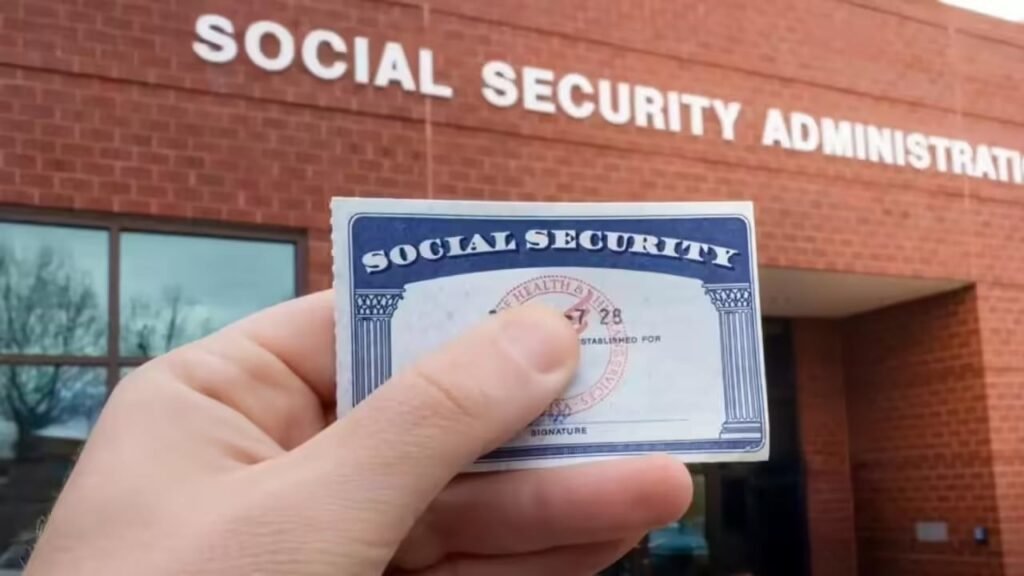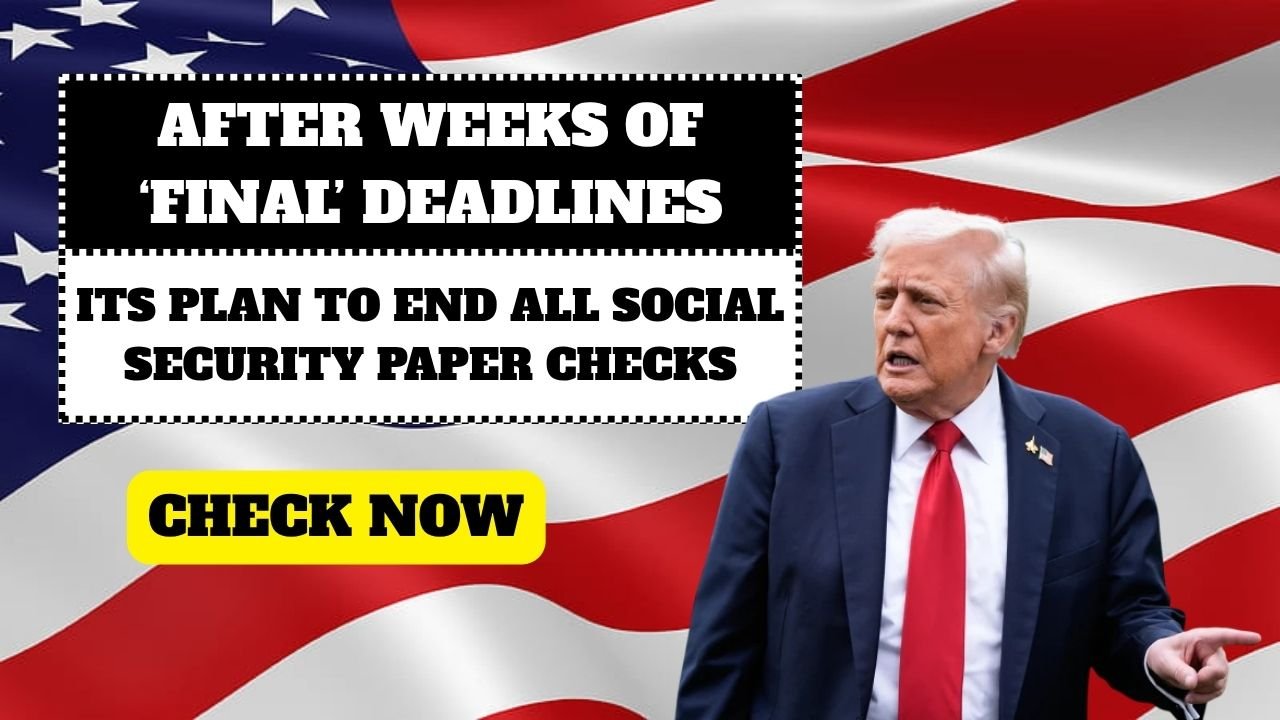For months, federal officials have insisted that Social Security paper checks had been at the verge of permanent extinction. In past due summer season, the government introduced what it described because the “final deadline” for beneficiaries to exchange to direct deposit or prepaid debit cards, caution that paper checks could quickly be removed totally.
But in a surprising flip of activities, after weeks of firm closing dates and stern reminders, the authorities is now quietly walking again its plan to give up all paper Social Security payments bringing up logistical challenges, accessibility worries, and public backlash from millions of seniors who still depend upon bodily checks.
A Sudden Shift in Tone
Until recently, the Social Security Administration (SSA) and the U.S. Department of the Treasury had maintained a strict stance: all beneficiaries need to get hold of payments electronically via Direct Express cards or bank deposits, as part of an attempt to modernize payment structures and decrease fraud.
The October 2025 deadline was billed as the absolute cutoff date. Seniors who failed to make the switch were told they could experience delays or interruptions in their benefits.
However, internal agency sources and updated federal guidance now confirm that the government is “re-evaluating” the full phaseout of paper checks, with new exceptions being added for vulnerable and rural populations.
Why the Reversal Happened
According to officials familiar with the matter, several factors contributed to the government’s quiet decision to slow or reverse the plan:
- Limited Internet and Banking Access:
Many seniors in particular those in rural or low-income groups still lack dependable net or banking get right of entry to, making virtual payments hard or impossible to manipulate. - Elderly and Disabled Populations at Risk:
Some beneficiaries have physical or cognitive disabilities that make navigating on-line banking or card systems challenging. Paper checks, for them, remain the most dependable option. - Increased Reports of Payment Errors and Fraud:
The Treasury Department has seen a noticeable rise in Direct Express card errors and digital fraud cases, leading officials to reconsider whether full digitization actually enhances security for all users. - Public and Congressional Pressure:
Advocacy groups and several members of Congress urged the government to reconsider, arguing that a “one-size-fits-all” policy unfairly harms older Americans who depend on traditional financial methods.
As a result, rather than enforcing a hard deadline, the SSA is now planning to extend the use of paper checks indefinitely for a subset of beneficiaries who meet certain criteria.
What This Means for Beneficiaries
Under the revised guidance, Social Security recipients who are unable to use electronic payment systems due to age, disability, or lack of access will be allowed to continue receiving paper checks.
The Treasury Department’s Fiscal Service, which oversees federal payments, confirmed that the agency is reviewing applications for “hardship exemptions” that would permit paper delivery beyond 2025.
Those exemptions will likely apply to:
- Seniors over 80 years old
- Individuals in remote or underserved areas without nearby banking access
- People with disabilities or health limitations affecting digital literacy
- Recipients of representative payees who prefer paper transactions for accountability
For everyone else, direct deposit remains the preferred and default payment method, as it is faster, more secure, and less costly for the government to process.

Background: The Push Toward Full Digitization
The plan to eliminate paper checks has been in motion for more than a decade. In 2013, the Treasury launched the “Go Direct” initiative, encouraging all Social Security, SSI, VA, and federal benefit recipients to switch to electronic payments. At the time, officials argued that digital deposits saved taxpayers over $100 million annually in printing and mailing costs.
Since then, over 98% of beneficiaries have made the switch. But that still leaves roughly 3 million Americans who rely on paper checks each month — a small but significant group for whom the transition has proven difficult.
Advocates Warn Against Forcing Vulnerable Seniors
Elder advocacy organizations such as the National Council on Aging (NCOA) and AARP have raised concerns for years about the potential harm of removing paper options entirely.
“These are some of the most vulnerable members of society,” said an AARP policy director in an October statement. “For many seniors, especially those in nursing homes or rural towns, that paper check isn’t just a payment — it’s a lifeline.”
These groups argue that seniors who cannot manage digital banking could face missed payments, account fraud, or loss of access to essential benefits like food and medication.
Government’s Updated Position
While officials have stopped short of issuing a public reversal announcement, statements from Treasury and SSA representatives indicate a more flexible approach.
“The vast majority of recipients now receive payments electronically,” said an SSA spokesperson. “However, we are committed to ensuring that every eligible beneficiary — regardless of age or access — continues to receive their benefits without disruption.”
In other words, paper checks are not disappearing completely. Instead, they are being phased out “gradually and selectively,” with safeguards for those unable to transition.
What Happens Next
Beneficiaries who still receive paper checks do not need to panic or rush to make changes.
Officials suggest the following steps:
- Do nothing if you already receive your benefits electronically — no changes required.
- If you prefer to continue receiving a paper check, you may soon need to submit a hardship exemption form through the SSA or Treasury portal (details forthcoming).
- If you want to switch to Direct Express or direct deposit, you can do so anytime at ssa.gov/myaccount.
The agencies are expected to release updated guidance by early 2026, clarifying which groups will remain eligible for paper checks and for how long.
Conclusion
The government’s initial plan to end paper checks for Social Security benefits by September 30, 2025, has been softened. While the goal of moving to digital payments remains, the agency has confirmed that paper checks will continue for those unable to switch.
If you’re a Social Security or SSI recipient still receiving paper checks, this means you’re not being forced into a digital payment method you may not be comfortable with—or able to use. That said, moving to direct deposit remains a wise step for peace of mind and security. Stay informed, check your options, and make the choice that works best for you.



